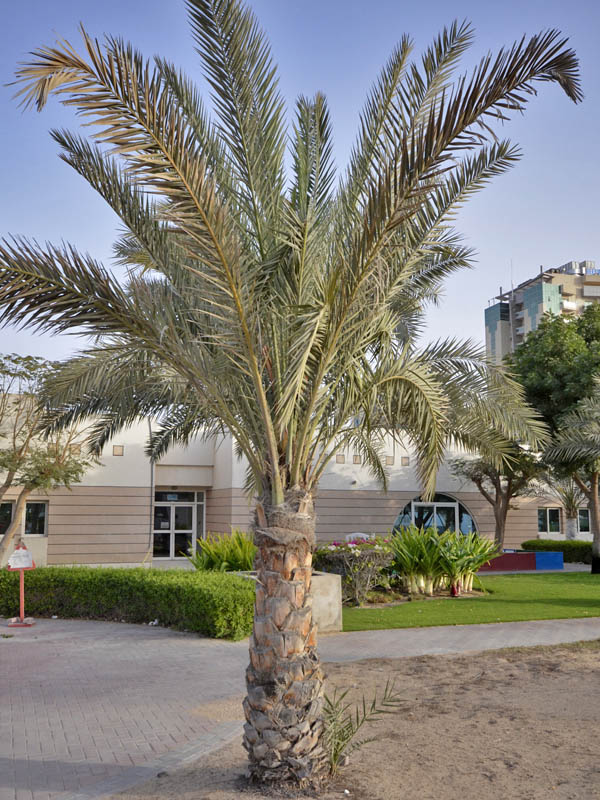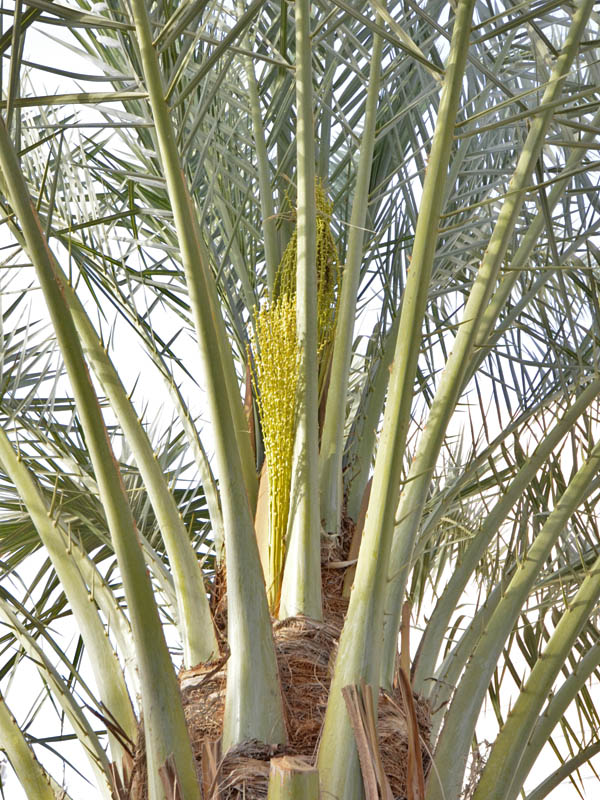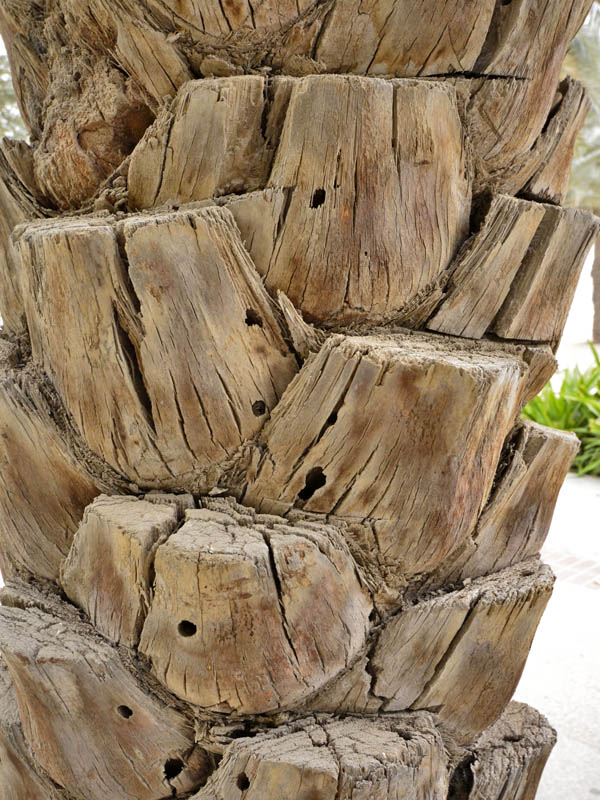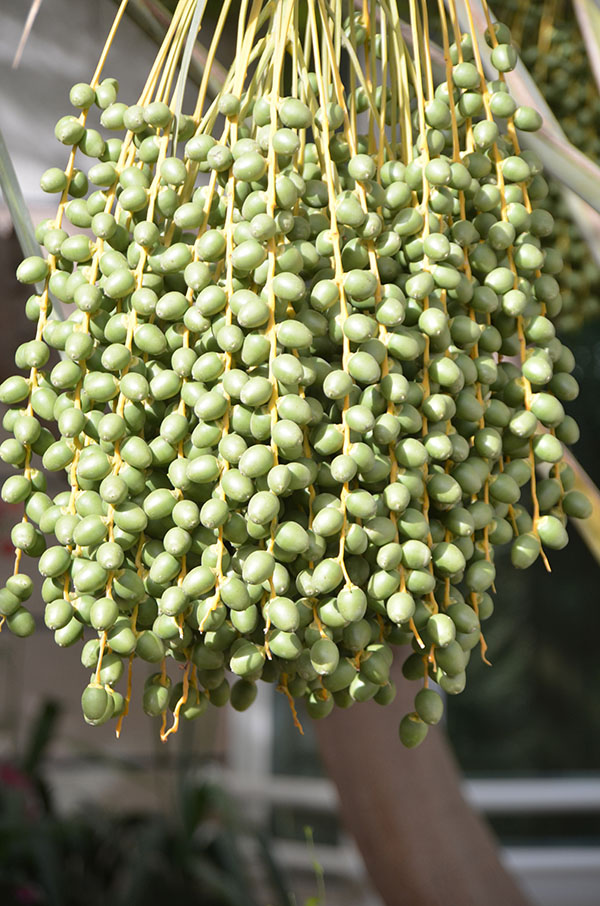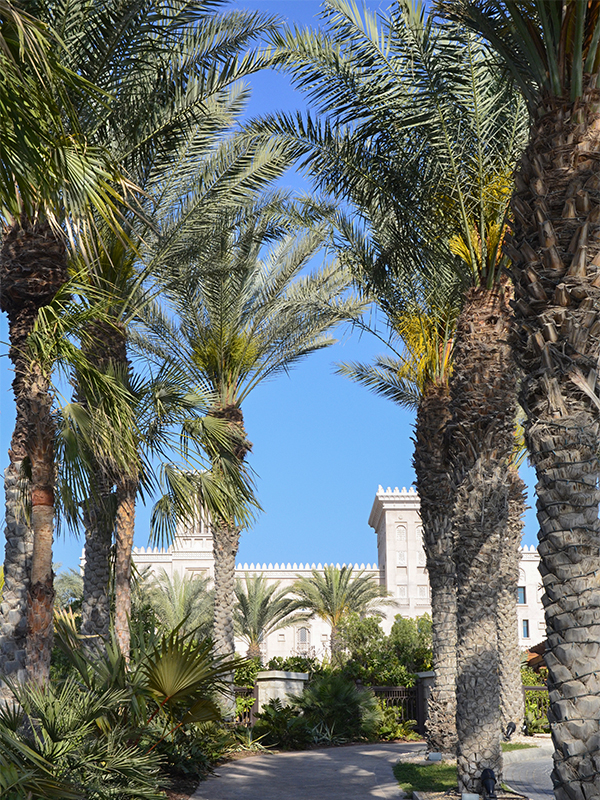
Tropicals, Woody > Phoenix > Phoenix dactylifera > Phoenix dactylifera
Phoenix dactylifera
Date Palm
Origin: Native to western Asia and North Africa.
| Family |
| Arecaceae |
| Genus |
| Phoenix |
| Species |
| dactylifera |
| Category |
| Tropicals, Woody |
| Type |
| Tree (evergreen) |
| Synonyms |
| Phoenix iberica |
| USDA Hardiness Zone |
| 9 - 11 |
| Canadian Hardiness Zone |
| Requires cool season protection under glass. |
| RHS Hardiness Zone |
| H3 - H1c |
| Temperature (°C) |
| 2 |
| Temperature (°F) |
| 24 |
| Height |
| 15 - 30 m |
| Spread |
| 5 - 7 m |
Photographs
Description and Growing Information
Flowering Period
| Landscape |
| As an ornamental tree or in small or large plantations as a food source. |
| Cultivation |
| Plant in extremely well-draining loamy to sandy soil that is neutral to slightly alkaline. |
| Shape |
| Upright erect. |
| Growth |
| Medium |
| Habitat |
| Dry arid sandy plains. |
| Bark/Stem Description |
| Rugged, cracked woody bark formed from mature frond stems as the tree grows upward. Frond stems are erect, smooth, glaborous and slightly fleshy. |
| Leaf Description |
| Broad fan-shaped fronds of 20 - 30 lanceolate leaflets on long erect frond stems. |
| Fruit Description |
| Oblong-ovate 'date' fruits that measure approximately 3 - 4 cm in length that are widely consumed in their native region and exported to the world. The dates grow oppositely in clusters along long stems at the base of the tree's fronds. |
| Colour Description |
| Pale tan-brown bark which greens and softens in colour as the tree climbs. Pale sage green foliage. |
| Texture Description |
| Coarse and woody bark. |
| Notable Specimens |
| Many great specimens can be found along the highways of Dubai in the United Arab Emirates. |
| Propagation |
| Seed. |
| Ethnobotanical Uses (Disclaimer) |
| The fruit is highly valued in many regions of the world where it is a staple of peoples diet. The fronds are used for thatch and screening while in India the tree is tapped for date wine. The seeds, which remain viable for some time, can also be ground into a meal for animal feed. The trunk, although not structurally strong, can be used in construction. The fronds can also be further worked into baskets, mats, fishing traps, etc. |
